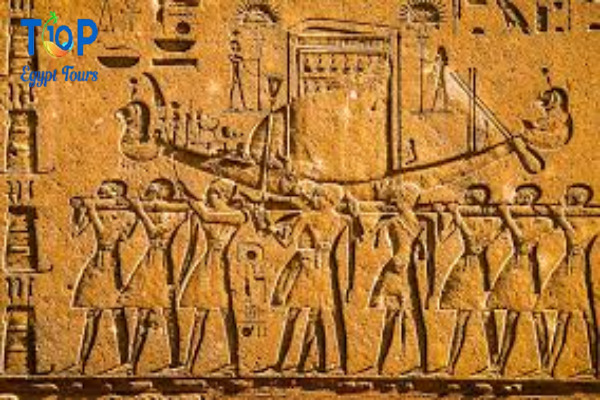Rituals Of The Dead The Feast Of The Valley, Welcome to the mystical world of Ancient Egyptian traditions, where rituals and festivals played a crucial role in shaping the cultural landscape. In this exploration with Top Ten Egypt, we delve into the captivating realm of the Beautiful Feast of the Valley, a sacred celebration that resonates with the ancient echoes of Egypt. As we unravel the intricacies of this remarkable event, you’ll discover the profound significance it held for the people of Ancient Egypt and how it continues to captivate the imagination of modern travelers.
Rituals Of The Dead The Feast Of The Valley
The Beautiful Feast of the Valley, also known as the “Feast of the Breaking of the Nile,” was an annual event of great importance in Ancient Egypt. Held in the city of Thebes, modern-day Luxor, this festival was a time for the living to honor and commune with the spirits of the departed. The celebration took place during the New Year, aligning with the flooding of the Nile, symbolizing the renewal of life and fertility.
Rituals and Ceremonies:
- Procession of Deities: The festival began with a grand procession of priests, carrying sacred images of the deities, and the Pharaoh himself. This ceremonial march traversed the sacred path leading to the burial sites of the pharaohs in the Valley of the Kings.
- Offerings and Sacrifices: Once at the tombs, offerings of food, wine, and symbolic items were presented to the deceased pharaohs and other revered ancestors. These offerings were believed to nourish the spirits in the afterlife and ensure their eternal well-being.
- Chapels and Temples: Elaborate rituals were conducted within the chapels and temples dedicated to the deceased. The priests performed rites, recited prayers, and engaged in sacred ceremonies to honor the spirits and seek their blessings for the prosperity of the living.
- Feasting and Merriment: The festival wasn’t solely somber; it also included moments of joy and celebration. Families would gather for communal feasts, sharing food and stories, fostering a sense of unity and continuity between the living and the dead.
Symbolism and Beliefs:
The Beautiful Feast of the Valley was deeply rooted in the ancient Egyptian belief in the cyclical nature of life, death, and rebirth. The flooding of the Nile symbolized the rejuvenation of the land and its people, mirroring the cycle of life and death. The rituals performed during the festival aimed to maintain harmony between the living and the deceased, ensuring a prosperous existence for both.
Legacy and Modern Interpretation:
While the Beautiful Feast of the Valley is an ancient tradition, its essence continues to be felt in modern times. Visitors to Egypt during this period can witness cultural events, exhibitions, and performances that pay homage to this rich heritage. The festival serves as a bridge between the past and the present, allowing travelers to connect with the profound spirituality and cultural depth of Ancient Egypt.
The Beautiful Feast of the Valley stands as a testament to the enduring legacy of Ancient Egyptian civilization. As you embark on your journey to explore Egypt with Top Ten Egypt Tours, immerse yourself in the echoes of this enchanting festival, where the past comes alive, and the spirits of the pharaohs continue to weave their magic through the sands of time.



Comment (0)